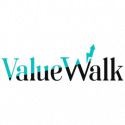Politics
Turning Your Rental Into A Smart Home: How Automation Tools Can Benefit Both Tenants And Landlords
Published
11 months agoon
By
Drew Simpson
American households are becoming increasingly digital as the rise of automated technology enables more families to use smart devices to make their at-home living more comfortable and convenient.
The most recent home statistics revealed that more than 60.2 million American households are actively making use of smart home devices as of 2023; this represents a three percent increase from last year.
Why Demand For Smart Home Automation Is Rapidly Growing
From smart televisions, appliances, on-demand internet connectivity, and round-the-clock security monitoring, more people now than ever want more automated smart living devices in their homes.
By the same breath of things, younger renters such as Gen Zs (born between 1997 and 2012); and Millennials (born between 1981 and 1996), are demanding more automated technology in their rentals – and they’re willing to pay more for it as well.
In fact, one study found that nearly 86 percent of tech-savvy Millennial renters said they would pay more for their rent if their new residence came with smart features. This comes at the cost of landlords, seeing as Millennials will soon represent the largest rental and buying market in the United States.
Statistics from 2019 showed that 43 percent of Gen Z home buyers said more smart devices and capabilities were highly important, whereas a mere 15 percent of Baby Boomers said the same.
Home automation is not anymore a luxury, but rather a necessity, and for landlords, this could either create a problem or an opportunity to make rental properties more enticing for younger renters who are willing to cash out for the convenience of smart homes.
What Is Smart Home Automation?
In the past, smart home devices and automation were only seen in several high-tech apparatus.
The rise of digital television was later paired with smart capabilities that allowed viewers to record and save television footage directly on their TV. Later on, smart kitchen appliances such as fridges become more energy efficient, helping reduce utility bills for tenants.
Nowadays, it seems as if smart technology is embedded in nearly everything we touch and use. The parity between home appliances and the internet meant that nearly everything in our homes can now be connected to a common network, which enables us to independently and remotely control everything from one point of contact.
Everything from fireplaces to curtains can be automatically operated. Motion sensors at doors, windows, and around living quarters can now detect even the slightest of movements. Digital devices can now monitor electricity and water usage more efficiently, helping landlords compile more accurate utility bills.
Automated tools have enabled individuals to take better advantage of their homes, use appliances more effectively, live more sustainability and feel more secure.
How Smart Home Automation Can Benefit Tenants And Landlords
Perhaps the greatest improvement that technology has brought to the modern home, or apartment for that matter, is access and convenience.
Implementing smart home automation, even in the slightest form, helps ease access to improved living conditions, which at the same time helps improve overall convenience, ultimately having a positive effect on their lifestyle.
For landlords, and most tenants, having better access to smart home automation can help benefit both groups in the near and long term, here’s how.
Convenience Of Connectivity
For tenants, being better connected with their homes, either through a smartphone or smart speaker allows them to use different functionalities at once. However, for landlords, this creates just as much benefit, whereas, they can now manage homes or rental units more effectively.
Landlords can now effectively monitor utility usage per unit, instead of having to do manual meter readings of each unit separately. These smart devices can then be linked to a remote accessed network, whereby landlords can access data as needed.
This makes it easier for landlords to make more accurate readings, and manage utility bills faster, especially across multiple properties. Being connected is an effective way for landlords to have better control over their rental properties when they are not present, or unable to attend to issues that may arise over time.
Improved Safety And Security
There is a lot of ground landlords need to cover when it comes to the safety of their tenants, regardless of their age or mobility.
Often state and county jurisdictions will require landlords to have the appropriate monoxide and smoke detectors installed in all their units, or throughout the building. Other security features such as CCTV or smart locks on entrance or apartment doors are another must-have for rental properties.
However, relying on outdated equipment not only puts tenants at risk but could also be a costly mistake for landlords.
Smart security features, such as automated locks, smart smoke alarms, water sensors, and interior or exterior cameras can help provide remote access to landlords that want to monitor the building.
These smart security measures are not only applicable when a property is occupied, but also during times when units are vacant, when renters are away, or between tenancies.
Security is perhaps one of the biggest, if not the main concerns for tenants when hunting for a new home. Increased security can also lead to other issues such as privacy concerns, which in most cases will need careful consideration and effective communication between landlords and tenants.
Reducing Unit Costs
While the initial cost of investment in smart home features, such as security equipment or home sensors, isn’t cheap, it can help to lower the cost of maintaining individual units over the long term.
Home automation can help lower energy bills for tenants, making their living arrangements energy-efficient. Installing updated water heaters, and smart thermostats can make it cheaper for landlords that offer properties with utility bills included, which at the same time could increase their turnover per rental unit.
Simple things can make the biggest change. Replacing gas-powered items with more energy-efficient appliances such as induction stoves, or removing costly lights already makes a big difference in utility bills and helps lower each rental unit’s carbon footprint.
There are a wide variety of different smart devices that can be used to help improve not only the appeal of each unit, but at the same time lower maintenance costs for landlords, and monthly utility bills for tenants.
Securing Property Investments
Something that is often overlooked by many landlords when contemplating the use of smart home devices, is how it can protect and improve the value of their investment properties.
With the use of smart devices, whether it’s automated locks or remote access control, these features make a big difference in the long run that enables landlords to keep their investments secure against any bad actors or poor tenant behavior and protects their assets against any other possible threats.
Creating More Appeal For Rental Units
Driven by high-interest rates, costly homes, and a lack of inventory, demand for rental properties has skyrocketed over the last several years. Latest industry figures indicate that asking rent prices are now $2,018 on average for April, marking a 5.3 percent increase for the same recorded period last year.
While asking rental prices have reached stratospheric rates, it’s not to say that available, or more affordable rentals are the most appealing for younger tenants.
As we’ve already seen, younger tenants want more access and convenience when it comes to their living arrangements. With this said, the need for digital features, wherever they may be applicable has meant that rental units that have better technology throughout the home are becoming increasingly appealing to new renters.
With the right type of digital features, it’s possible to fill rental units faster, and with the right people. Tenants are also more discerning now than ever before, they are looking for properties that have digital smart features that align with their values of sustainability and quality of life.
Attracting the right tenants, in a frantic market, means that landlords need to step up their game if they’re looking to win over tenants that are willing to pay slightly more for convenience and quality.
The Bottom Line
Creating a more automated and tech-savvy home requires landlords to first establish what their needs might be, and how much resources they’re willing to invest in their rental units. Furthermore, landlords need to consider how the right smart tools will help grow their return on investment, and how these features will be more appealing to a growing number of younger renters.
Published First on ValueWalk. Read Here.
Featured Image Credit: Vecislavas Popa; Pexels; Thank you!
You may like
-


Behind Microsoft CEO Satya Nadella’s push to get AI tools in developers’ hands
-


Turning medical data into actionable knowledge
-


How AI is Changing Data Management: Embracing the AI-Driven Automation Era
-


These new tools could make AI vision systems less biased
-


10 EdTech Tools That’s Enhancing The Digital Classroom
-


Unleashing Smart Contracts for Business Breakthroughs
Politics
Fintech Kennek raises $12.5M seed round to digitize lending
Published
7 months agoon
10/11/2023By
Drew Simpson
London-based fintech startup Kennek has raised $12.5 million in seed funding to expand its lending operating system.
According to an Oct. 10 tech.eu report, the round was led by HV Capital and included participation from Dutch Founders Fund, AlbionVC, FFVC, Plug & Play Ventures, and Syndicate One. Kennek offers software-as-a-service tools to help non-bank lenders streamline their operations using open banking, open finance, and payments.
The platform aims to automate time-consuming manual tasks and consolidate fragmented data to simplify lending. Xavier De Pauw, founder of Kennek said:
“Until kennek, lenders had to devote countless hours to menial operational tasks and deal with jumbled and hard-coded data – which makes every other part of lending a headache. As former lenders ourselves, we lived and breathed these frustrations, and built kennek to make them a thing of the past.”
The company said the latest funding round was oversubscribed and closed quickly despite the challenging fundraising environment. The new capital will be used to expand Kennek’s engineering team and strengthen its market position in the UK while exploring expansion into other European markets. Barbod Namini, Partner at lead investor HV Capital, commented on the investment:
“Kennek has developed an ambitious and genuinely unique proposition which we think can be the foundation of the entire alternative lending space. […] It is a complicated market and a solution that brings together all information and stakeholders onto a single platform is highly compelling for both lenders & the ecosystem as a whole.”
The fintech lending space has grown rapidly in recent years, but many lenders still rely on legacy systems and manual processes that limit efficiency and scalability. Kennek aims to leverage open banking and data integration to provide lenders with a more streamlined, automated lending experience.
The seed funding will allow the London-based startup to continue developing its platform and expanding its team to meet demand from non-bank lenders looking to digitize operations. Kennek’s focus on the UK and Europe also comes amid rising adoption of open banking and open finance in the regions.
Featured Image Credit: Photo from Kennek.io; Thank you!
Radek Zielinski
Radek Zielinski is an experienced technology and financial journalist with a passion for cybersecurity and futurology.
Politics
Fortune 500’s race for generative AI breakthroughs
Published
7 months agoon
10/11/2023By
Drew Simpson
As excitement around generative AI grows, Fortune 500 companies, including Goldman Sachs, are carefully examining the possible applications of this technology. A recent survey of U.S. executives indicated that 60% believe generative AI will substantially impact their businesses in the long term. However, they anticipate a one to two-year timeframe before implementing their initial solutions. This optimism stems from the potential of generative AI to revolutionize various aspects of businesses, from enhancing customer experiences to optimizing internal processes. In the short term, companies will likely focus on pilot projects and experimentation, gradually integrating generative AI into their operations as they witness its positive influence on efficiency and profitability.
Goldman Sachs’ Cautious Approach to Implementing Generative AI
In a recent interview, Goldman Sachs CIO Marco Argenti revealed that the firm has not yet implemented any generative AI use cases. Instead, the company focuses on experimentation and setting high standards before adopting the technology. Argenti recognized the desire for outcomes in areas like developer and operational efficiency but emphasized ensuring precision before putting experimental AI use cases into production.
According to Argenti, striking the right balance between driving innovation and maintaining accuracy is crucial for successfully integrating generative AI within the firm. Goldman Sachs intends to continue exploring this emerging technology’s potential benefits and applications while diligently assessing risks to ensure it meets the company’s stringent quality standards.
One possible application for Goldman Sachs is in software development, where the company has observed a 20-40% productivity increase during its trials. The goal is for 1,000 developers to utilize generative AI tools by year’s end. However, Argenti emphasized that a well-defined expectation of return on investment is necessary before fully integrating generative AI into production.
To achieve this, the company plans to implement a systematic and strategic approach to adopting generative AI, ensuring that it complements and enhances the skills of its developers. Additionally, Goldman Sachs intends to evaluate the long-term impact of generative AI on their software development processes and the overall quality of the applications being developed.
Goldman Sachs’ approach to AI implementation goes beyond merely executing models. The firm has created a platform encompassing technical, legal, and compliance assessments to filter out improper content and keep track of all interactions. This comprehensive system ensures seamless integration of artificial intelligence in operations while adhering to regulatory standards and maintaining client confidentiality. Moreover, the platform continuously improves and adapts its algorithms, allowing Goldman Sachs to stay at the forefront of technology and offer its clients the most efficient and secure services.
Featured Image Credit: Photo by Google DeepMind; Pexels; Thank you!
Deanna Ritchie
Managing Editor at ReadWrite
Deanna is the Managing Editor at ReadWrite. Previously she worked as the Editor in Chief for Startup Grind and has over 20+ years of experience in content management and content development.
Politics
UK seizes web3 opportunity simplifying crypto regulations
Published
7 months agoon
10/10/2023By
Drew Simpson
As Web3 companies increasingly consider leaving the United States due to regulatory ambiguity, the United Kingdom must simplify its cryptocurrency regulations to attract these businesses. The conservative think tank Policy Exchange recently released a report detailing ten suggestions for improving Web3 regulation in the country. Among the recommendations are reducing liability for token holders in decentralized autonomous organizations (DAOs) and encouraging the Financial Conduct Authority (FCA) to adopt alternative Know Your Customer (KYC) methodologies, such as digital identities and blockchain analytics tools. These suggestions aim to position the UK as a hub for Web3 innovation and attract blockchain-based businesses looking for a more conducive regulatory environment.
Streamlining Cryptocurrency Regulations for Innovation
To make it easier for emerging Web3 companies to navigate existing legal frameworks and contribute to the UK’s digital economy growth, the government must streamline cryptocurrency regulations and adopt forward-looking approaches. By making the regulatory landscape clear and straightforward, the UK can create an environment that fosters innovation, growth, and competitiveness in the global fintech industry.
The Policy Exchange report also recommends not weakening self-hosted wallets or treating proof-of-stake (PoS) services as financial services. This approach aims to protect the fundamental principles of decentralization and user autonomy while strongly emphasizing security and regulatory compliance. By doing so, the UK can nurture an environment that encourages innovation and the continued growth of blockchain technology.
Despite recent strict measures by UK authorities, such as His Majesty’s Treasury and the FCA, toward the digital assets sector, the proposed changes in the Policy Exchange report strive to make the UK a more attractive location for Web3 enterprises. By adopting these suggestions, the UK can demonstrate its commitment to fostering innovation in the rapidly evolving blockchain and cryptocurrency industries while ensuring a robust and transparent regulatory environment.
The ongoing uncertainty surrounding cryptocurrency regulations in various countries has prompted Web3 companies to explore alternative jurisdictions with more precise legal frameworks. As the United States grapples with regulatory ambiguity, the United Kingdom can position itself as a hub for Web3 innovation by simplifying and streamlining its cryptocurrency regulations.
Featured Image Credit: Photo by Jonathan Borba; Pexels; Thank you!
Deanna Ritchie
Managing Editor at ReadWrite
Deanna is the Managing Editor at ReadWrite. Previously she worked as the Editor in Chief for Startup Grind and has over 20+ years of experience in content management and content development.
